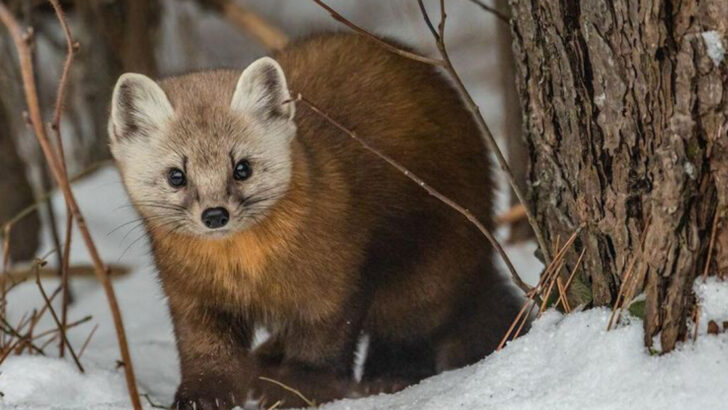Some of North America’s most fascinating animals live in the shadows—quiet, quick, and rarely seen by humans. They hide deep in forests, scale remote mountain ranges, or roam the night while most of us sleep. You could spend years outdoors and still never spot them. But just because they’re hard to find doesn’t mean they’re not important. These animals play a big role in their ecosystems and have adapted in incredible ways to survive without being noticed. Knowing they’re out there adds a bit of mystery to the wild places we think we know.
Canada Lynx

The Canada Lynx is a master of stealth, navigating the snowy forests of North America with ease. Known for their tufted ears and thick fur, these elusive cats are perfectly adapted to cold environments.
Primarily nocturnal, the lynx spends its nights hunting snowshoe hares, its favorite prey. Despite their size, lynxes are rarely seen due to their incredible ability to blend into their surroundings.
Spotting a lynx requires patience and a sharp eye, as these solitary creatures are experts at avoiding human contact. Their elusiveness only adds to their mystique.
Eastern Spotted Skunk

The Eastern Spotted Skunk, small and elusive, dances like a performer under the dim canopy of twilight. With a striking pattern of black and white spots, it captivates with a spectacle of acrobatic stunts. These skunks are not just agile but also intelligent, using their wits to escape predators.
Inhabiting dense woodlands, they create a world of their own, rarely stepping into the open. Their playful nature is matched by a cautious demeanor. Interestingly, unlike their more common cousins, their scent is less overpowering, making them less noticeable.
A true gem of the forest, they embody mystery and charm.
Northern Goshawk
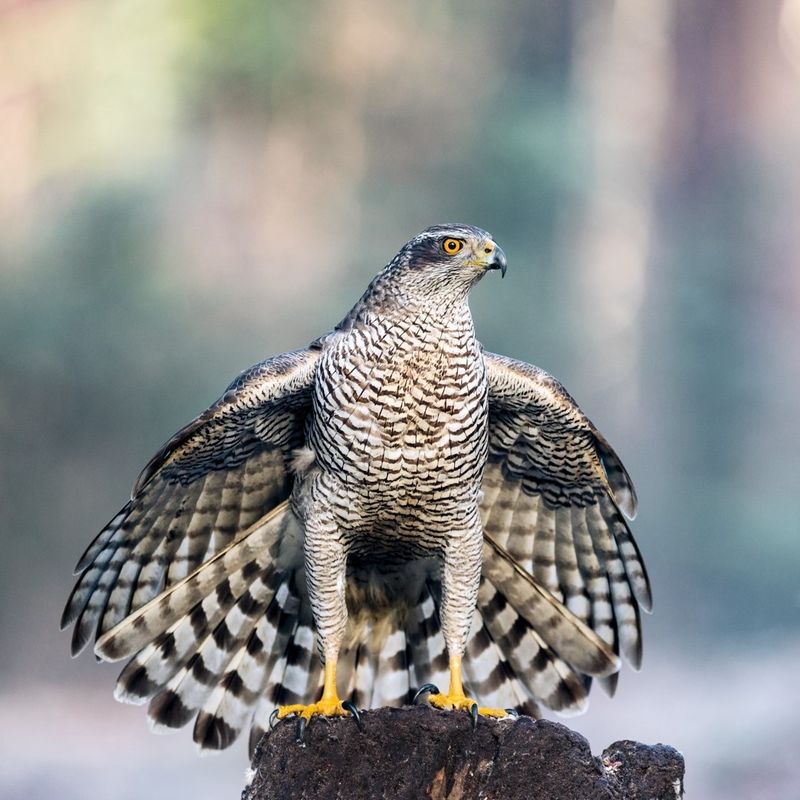
The Northern Goshawk, a powerful bird of prey, is known for its fierce hunting skills. With sharp talons and striking plumage, it soars through the forests of North America.
Goshawks are elusive, often nesting high in the trees where they remain concealed from human eyes. They hunt with precision, targeting birds and small mammals.
Spotting a goshawk requires patience and keen observation skills. Their sudden and swift appearance is a thrilling sight, highlighting their prowess as hunters.
American Marten
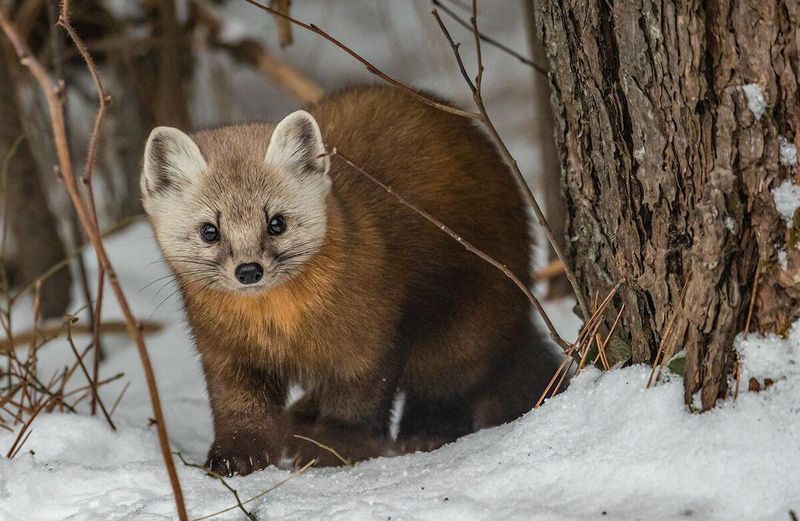
The American Marten is a small but agile predator found in the dense forests of North America. With a sleek body and pointed face, it effortlessly climbs trees in search of prey.
Martens are elusive creatures, often hidden among the coniferous canopy, making them difficult to spot. Their diet consists mainly of small mammals, birds, and insects.
Though they are rarely seen, signs of their presence can often be detected by the keen observer. Stumbling upon a marten is a delightful surprise for any wildlife enthusiast.
Red Wolf
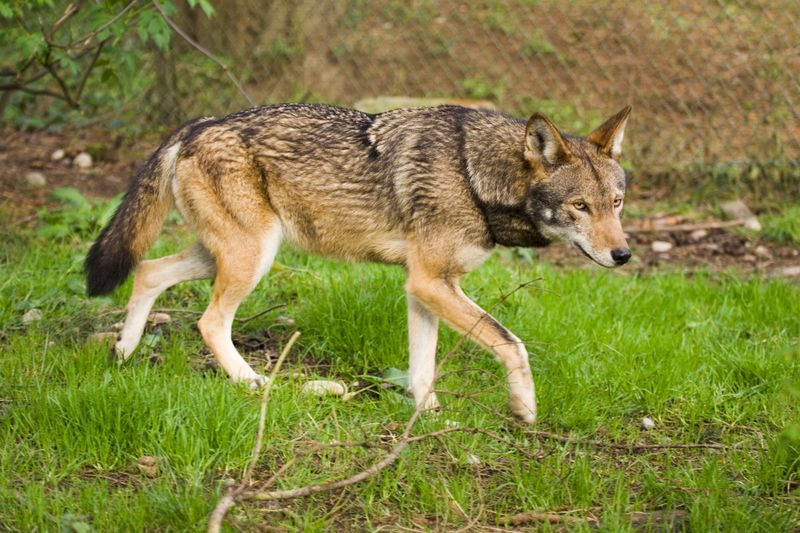
In the misty wetlands of the southeast, the Red Wolf prowls with a grace that belies its rarity. Its reddish-brown coat blends seamlessly with the earthy tones of its environment, making it a phantom of the marsh.
Once declared extinct in the wild, dedicated conservation efforts have reintroduced them back to their native habitat. These wolves, social creatures by nature, form tight-knit packs, living and hunting in harmony.
Their haunting howls, echoing through the fog, are a reminder of the wild’s fragile beauty, urging us to protect these scarred lands.
Mexican Long-nosed Bat
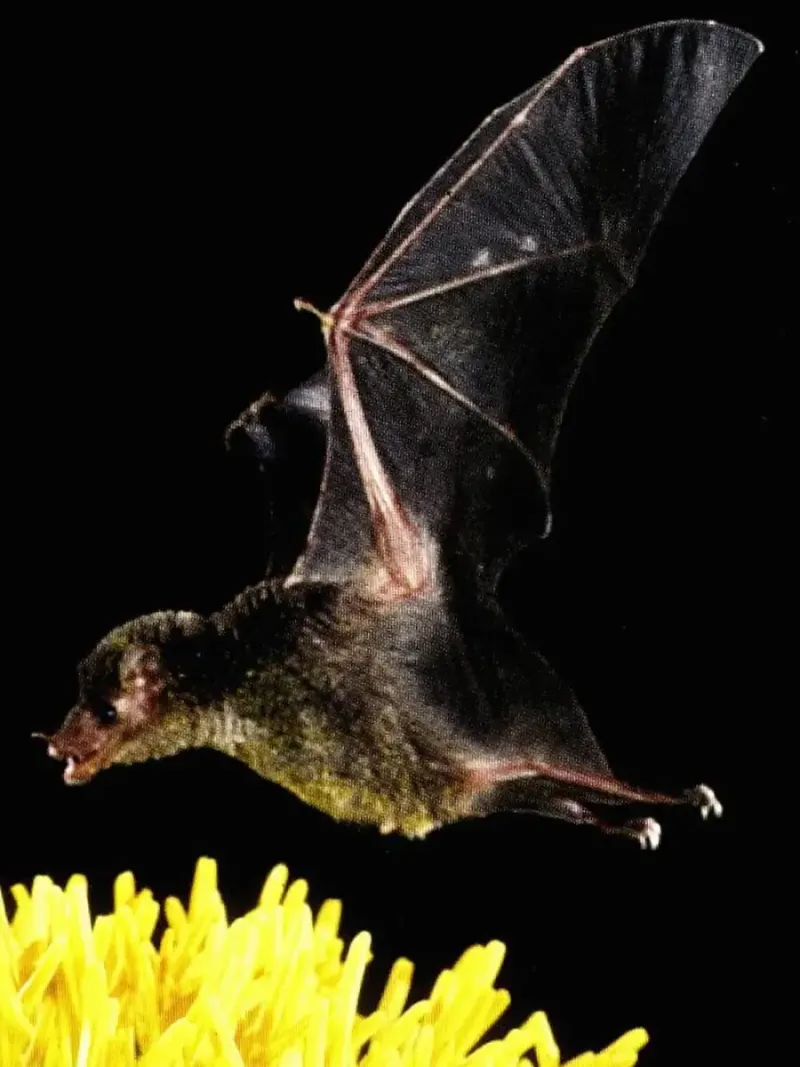
Emerging as night cloaks the desert, the Mexican Long-nosed Bat flits between shadows. Its long snout and large ears are perfectly designed for its nocturnal lifestyle. These bats play a crucial role in pollination, especially for the agave plants, which are vital for the ecosystem.
Their reliance on specific flowering plants makes them both unique and vulnerable. They travel great distances, crossing borders unnoticed, silently working to keep nature’s balance.
With a dwindling population, their soft calls are a fading symphony of the nighttime desert, highlighting the urgent need for conservation.
Wolverine

The wolverine, a tenacious and powerful predator, roams the alpine regions of North America. With a muscular build and bushy tail, it thrives in remote, snowy landscapes.
Renowned for its strength and ferocity, the wolverine can take down prey much larger than itself. It’s a solitary creature, often covering vast distances for food.
Despite its fearsome reputation, the wolverine remains one of North America’s most elusive animals. Its secretive nature and preference for isolated habitats make sightings a rare and thrilling experience.
Mountain Lion
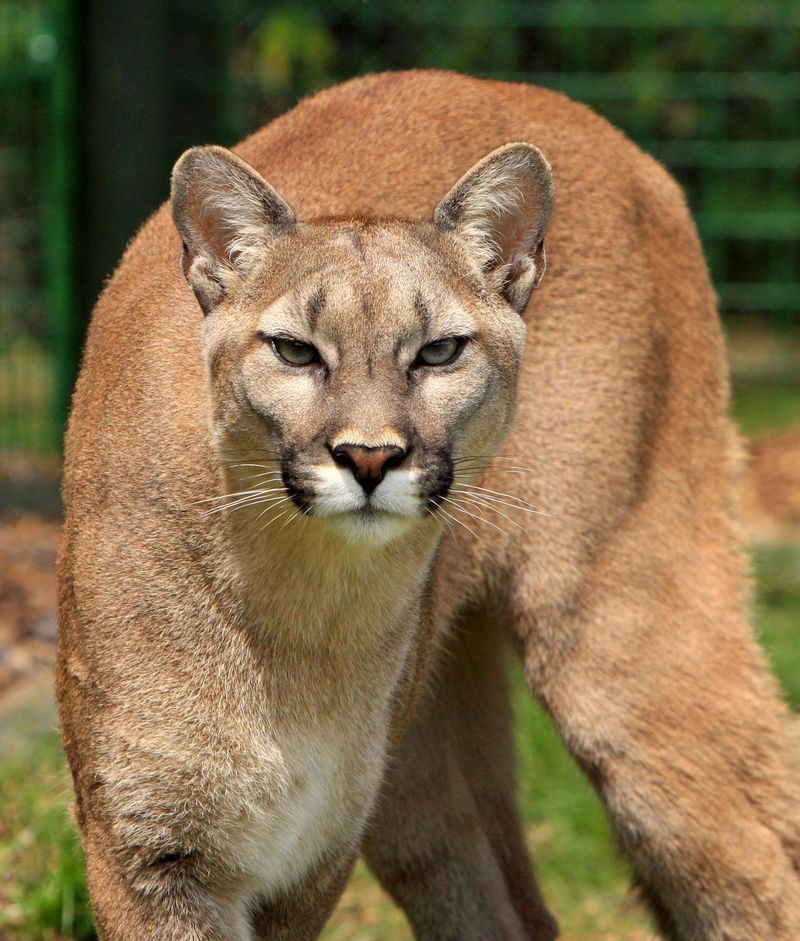
Mountain lions, also known as cougars, are majestic yet elusive predators found across North America. With their muscular build and agile movements, they navigate rocky terrain with ease.
Preferring solitude, these big cats are seldom seen, often active during dawn or dusk when they hunt deer and other mammals. Their stealthy nature allows them to remain undetected.
Spotting a mountain lion in the wild is a rare and awe-inspiring event, reminding us of the untamed beauty of nature. Their presence is a testament to the wilderness’s resilience.
Snowshoe Hare
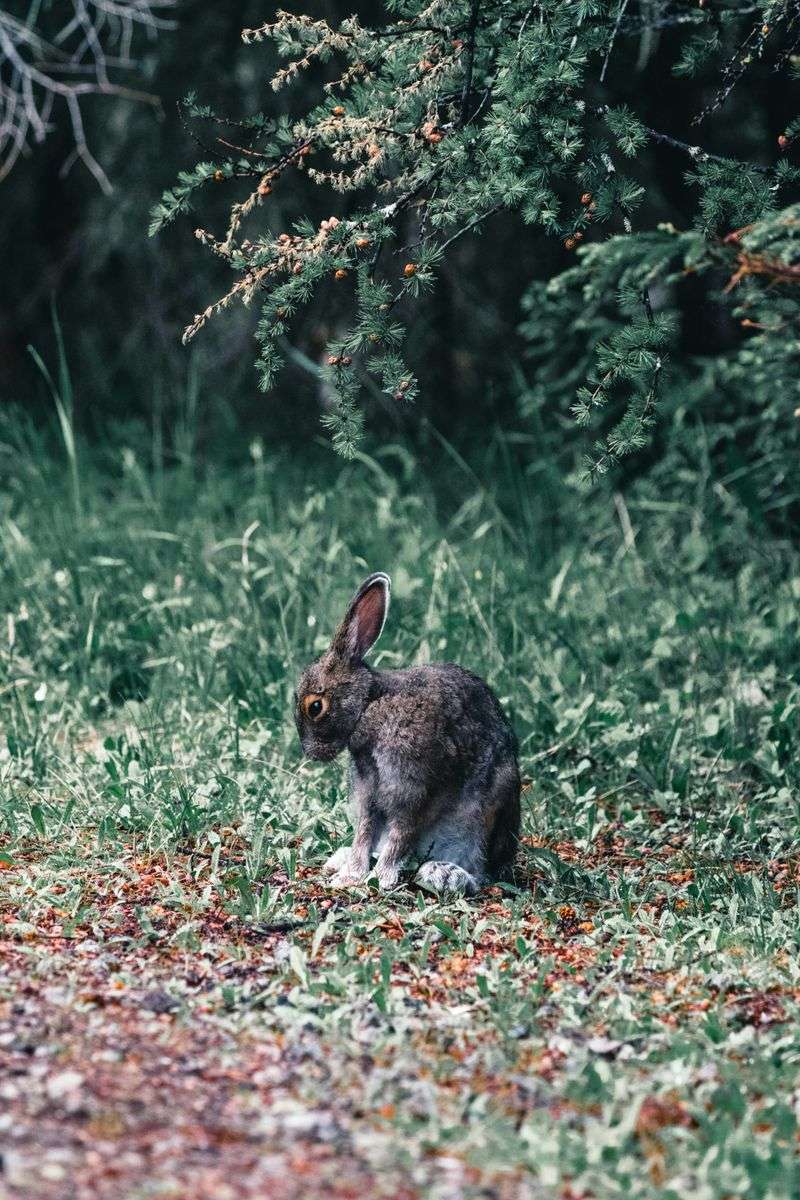
The snowshoe hare, with its distinctive large hind feet, is a master of camouflage in North America’s forested regions. Its fur changes with the seasons, turning white in winter to blend with the snow.
Hares are primarily nocturnal, making them challenging to spot during the day. They rely on their speed and agility to escape predators like the lynx.
Despite their elusive nature, keen observers may catch a glimpse of these fascinating creatures, especially during dawn or dusk. Their adaptability is key to their survival.
Grey Wolf
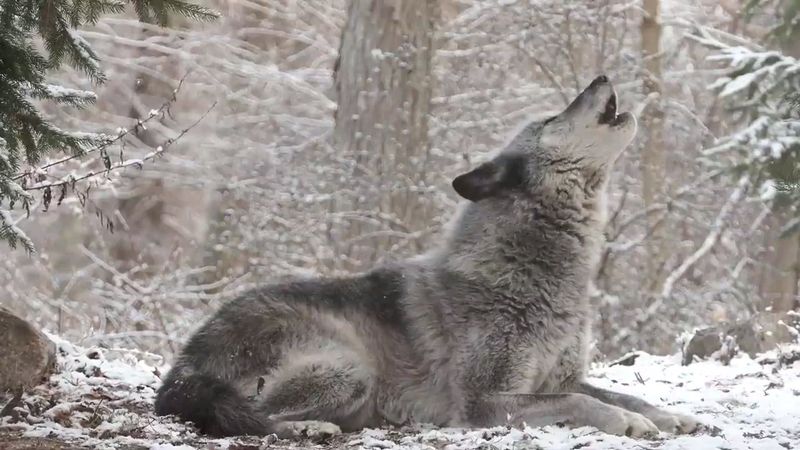
The grey wolf, an iconic symbol of the wild, often roams the forests and tundras of North America. Known for their piercing eyes and thick fur, wolves are social animals with complex pack dynamics.
Despite their fearsome reputation, wolves are elusive and prefer to avoid human encounters. Their haunting howls can be heard echoing through the wilderness.
Spotting a grey wolf in the wild is an exhilarating experience, offering a glimpse into the intricate social structure of the pack. Their presence signifies a healthy ecosystem.
Ocelot

The ocelot, with its striking spotted fur, is a rare sight in North America’s subtropical regions. These medium-sized cats are solitary and primarily nocturnal, making them challenging to observe.
Ocelots have a diverse diet, preying on small mammals, birds, and reptiles. Their stealth and camouflage are essential for survival in thick underbrush.
Encountering an ocelot is a special occasion for wildlife enthusiasts, as these beautiful creatures embody the mystery of the wild. Their elusive nature keeps them hidden from most.
American Badger
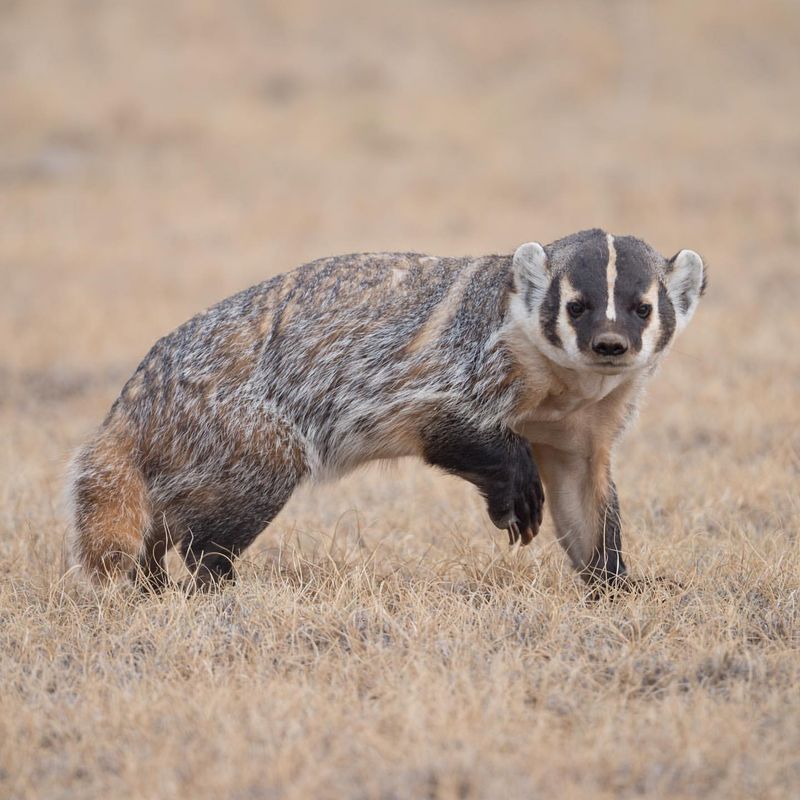
The American Badger is a tenacious and solitary digger found in the prairies and grasslands of North America. With a stocky build and distinctive facial markings, it is perfectly adapted for a life of burrowing.
Badgers are primarily nocturnal, making them difficult to spot during the day. They are known for their fierce nature when threatened.
Encountering a badger is a rare and exciting event, offering insight into the life of these mysterious creatures. Their presence often goes unnoticed, hidden beneath the earth.

